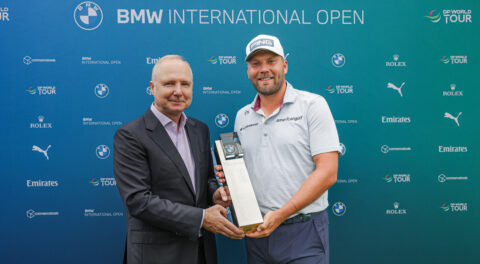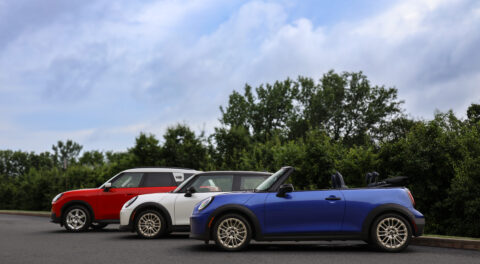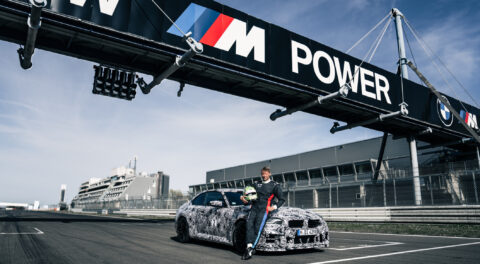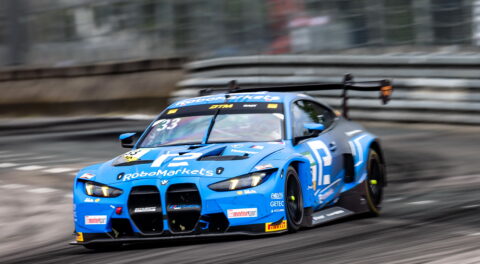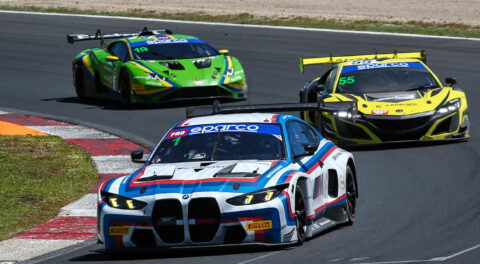Remember the criticisms of the current F30 3 Series being too soft and too numb to continue the long lineage of the entry-level ultimate driving machine? It wasn’t so long ago that BMW responded by significantly tweaking the suspension geometry for better feel during the life cycle impulse for the 2016 model year. Now, with the seventh generation of the iconic model line on the horizon, BMW is doubling down on its commitment to building a true sport sedan, and recently took prototypes of the G20 3 Series out for testing on the famous Nurburgring.
Well known for its varied collection of turns combined with rapidly undulating elevation change, the Nurburgring continues to be a strong focus for automakers relating to their performance models, and lap times serve as a benchmarking system for enthusiasts the world over. Although some manufacturers may be taking things a bit further by edging into marketing territory with their own testing on the celebrated road course, BMW made no effort to hide why the new Three was onsite, and that was to test and further refine the way in which the car interacts with the pavement, with a specific focus on maintaining the refined yet exhilarating feel that the roundel is known for.
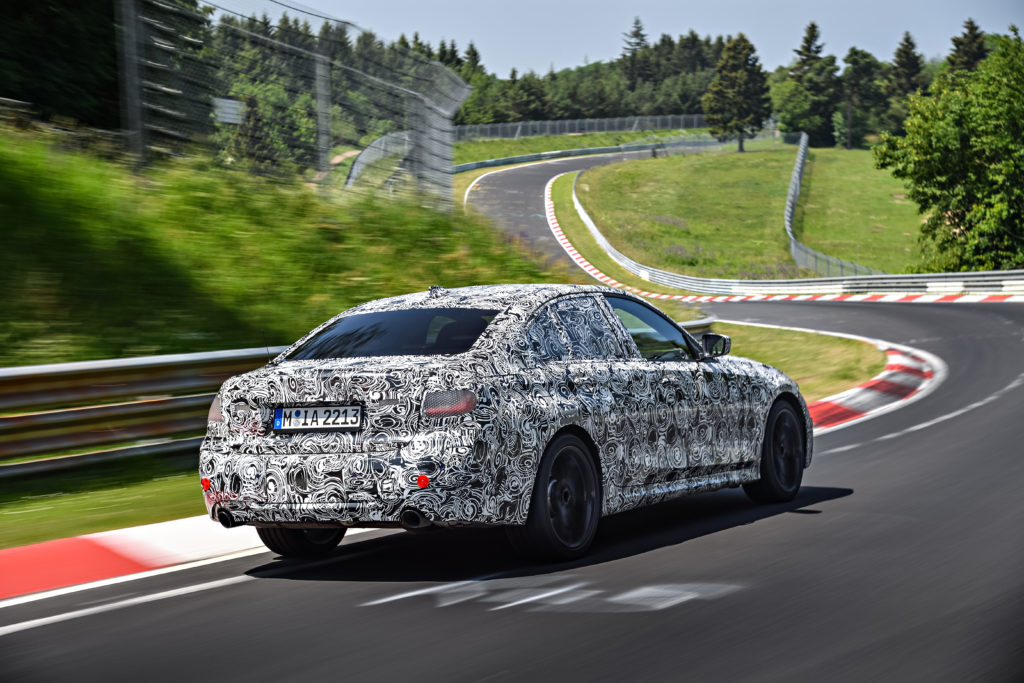
Expectations of the G20 retaining the classic rear wheel drive architecture that is a trademark of the brand seem to be confirmed, as the model range will be built upon its own specialized version of the CLAR platform. The ZF eight-speed automatic transmission will be seeing continued use, albeit with significant changes to adapt for new requirements and equipment. Power plant options are also being discussed, and BMW is also touting what’s claimed as the most powerful four-cylinder engine ever fitted in a series production model. More specifically, the two-liter unit of the 330i is developing some 255 HP and 295 lb. ft. of torque according to first-drive reviews that are trickling out from a few select outlets, while BMW itself says the new unit offers increased fuel economy in the neighborhood of five percent. The aforementioned torque figure is just a few degrees lower than what entry-level versions of the N54 and N55 three-liter sixes were making upon their introduction several years ago, but BMW isn’t letting this segment die on the vine by any means, with other sources indicating that there will be an M340i packing some 380 HP.
On a more technical front, significant developments have taken place in the chassis and suspension control systems which are specifically aimed at recapturing the sporty flair of older 3 Series generations that were known for their direct, unadulterated road interactions and exciting driving personality masquerading in an otherwise practical and understated form. In addition to a chassis offering increased rigidity and an overall design that weighs around 120 pounds less prior to specific fittings being added, balanced weight distribution of 50:50 is also mentioned, but most important is what’s going within the wheel wells and around the axles.
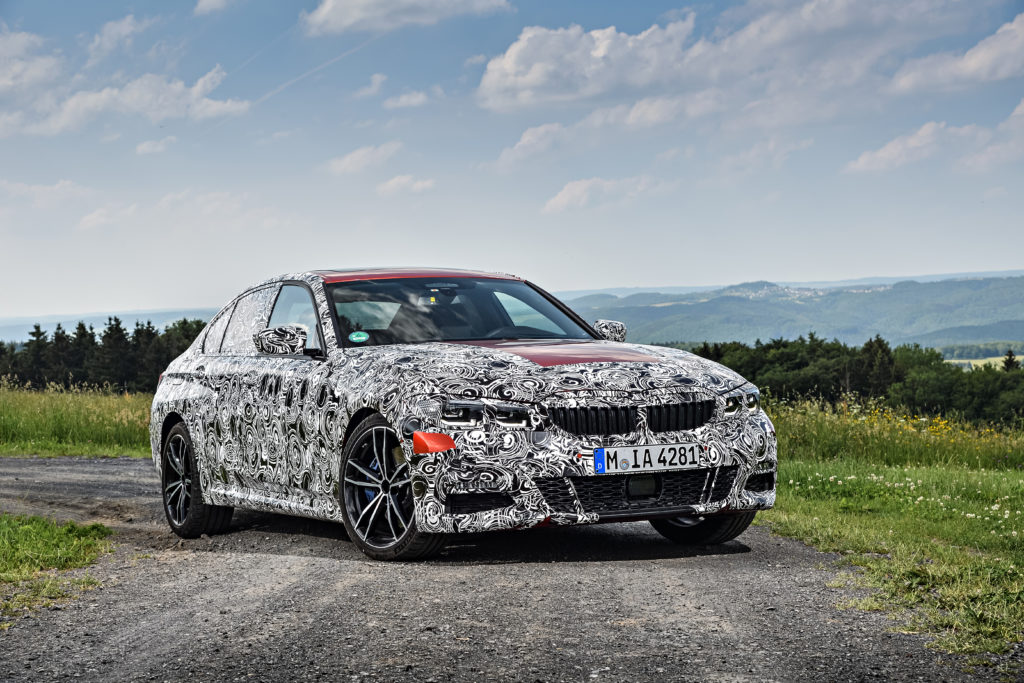
BMW prefers to use the terms axle kinematics and elastokinematics to describe the various bushings and arms that bring the wheel hubs, dampers, axles and steering mechanism together. These items are typically on the laundry list for an individual refreshing a BMW with any substantial mileage, as they have always been integral to the brands signature obsession with things that can perhaps best be summed up by the tag lines Ultimate Driving Machine and Sheer Driving Pleasure. On the G20, the automaker is planning what sounds like a return to form, in the face of stiff competition from Alfa Romeo, Mercedes-Benz, Audi and Kia.
Along with a center of gravity ten millimeters lower than its predecessor, expanded track widths are reported to make for improved agility and steering precision, while increased camber is setup to handle dynamic road conditions. Another new development are so-called lift-related dampers, which function in a continuous, progressive fashion relative to spring travel for each specific wheel. Tangible benefits include further dampening of the cavitation-causing vibrations that occur around turns and during hard cornering, along with increased compliance during more conventional driving circumstances. Some details relating to M-Sport equipment include a suspension ten millimeters lower than standard with dampening forces increased twenty percent, along with eighteen-inch light alloy wheels wrapped in mixed performance tires. The Nurburgring is the perfect place to test this new combination of suspension and chassis componentry, thanks to the myriad of unrelenting curves, drops and brief climbs which have a way of bringing out hidden flaws or misjudgments in otherwise proven designs.
Variable Sport Steering including Servotronic is also being retuned and recalibrated, as BMW seems to be hoping for higher customer take rates, while enthusiasts remain polarized regarding the technology. Improvements in the way of greater precision without seeming jittery and a linear buildup through corners are part of the agenda, coupled with a system that feels good through a long sweeping turn or a quick succession of direction changes such as a slalom.
Finally, there’s an M sports differential which is actually achieved via use of the Dynamic Stability Control (DSC) apparatus. Along with preventing slip and working to vector torque between the rear wheels, the concept is set up to provide much higher levels of transverse acceleration and better all-around performance when the vehicle is exiting a corner, which should translate to a much more predictable response than the last generation. Not to mention that while Audi and Mercedes push front wheel drive platforms like the CLA, A3 and downmarket versions of the A4 for their entry-level markets, BMW remains steadfast in their use of rear wheel drive on the 3 Series which currently remains priced in line with the lesser FWD counterparts.

Stepping away from the performance and technical aspects, the interior photo below shows the new steering wheel design seen in the X5, G30 5 Series and others, while the digital gauge cluster follows the same style being used in 8 Series. The center console also appears to feature switchgear arrayed in a way that follows the new control panel layout with a similar shifter and large iDrive controller.

While some might be fearful of what the future holds in relation to increased automation, electrification and consolidation of platforms, the upcoming seventh generation of the 3 Series shows us that there’s still a lot of be excited about, as BMW seems to remain focused on all of the right areas.—Alex Tock
[Photos courtesy BMW AG.]


